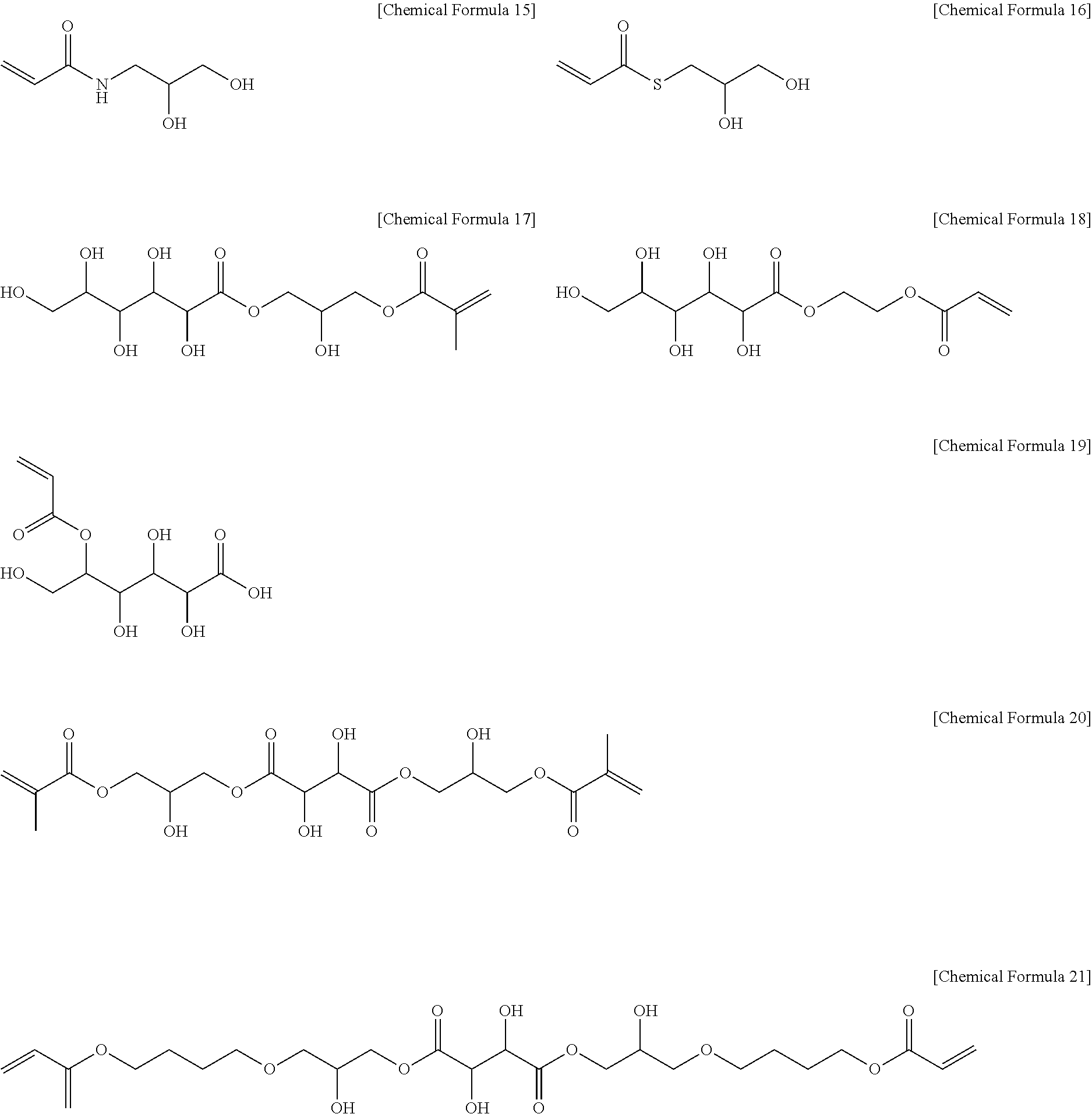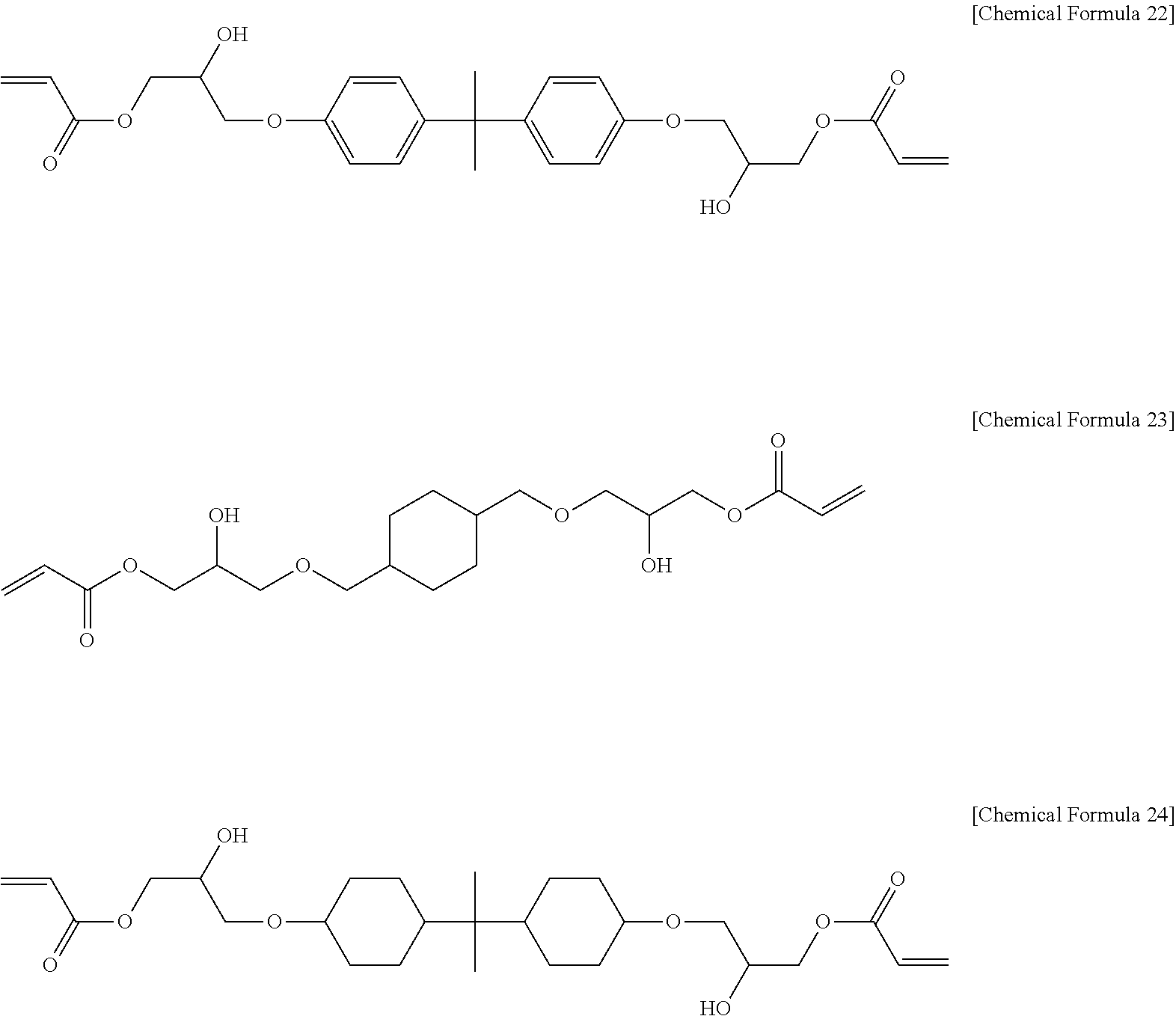Radical curable adhesive composition, and polarizing plate and optical member comprising same
a technology of polarizing plate and optical member, which is applied in the direction of amide/imide polymer adhesives, polarising elements, instruments, etc., can solve the problems of aqueous adhesives, limited use, and easy deformation of tac films in high temperature and high humidity environments, and achieve excellent water resistance, excellent adhesive strength, and high glass transition temperature
- Summary
- Abstract
- Description
- Claims
- Application Information
AI Technical Summary
Benefits of technology
Problems solved by technology
Method used
Image
Examples
preparation example 1
Preparation of Acryl-Based Protective Film
[0134]Raw material pellets were prepared by supplying a resin composition obtained by uniformly mixing poly(N-cyclohexylmaleimide-co-methylmethacrylate), a styrene-maleic anhydride copolymer resin and a phenoxy-based resin in a weight ratio of 100:2.5:5 to a 24 φ extruder substituted with nitrogen from a raw material hopper to an extruder, and melting the result at 250° C.
[0135]As the phenoxy-based resin, PKFE (Mw=60,000, Mn=16,000, Tg=95° C.) manufactured by InChem Corporation (trade name InChemRez) was used. As the styrene-maleic anhydride copolymer resin, Dylaeck 332 that is 85% by weight of styrene and 15% by weight of maleic anhydride was used, and as the poly(N-cyclohexylmaleimide-co-methylmethacrylate) resin, a compound having the N-cyclohexylmaleimide content in 6.5% by weight when analyzed using an NMR was used.
[0136]The obtained raw material pellets were vacuum dried, were melted at 260° C. using an extruder, then passed through a ...
preparation example 2
Preparation of Adhesive Composition
[0138](1) Adhesive Composition A
[0139]Adhesive Composition A for a polarizing plate was prepared by adding 3 parts by weight of irgacure-819 (manufactured by Ciba Specialty Chemicals Inc.), a radical initiator, to 100 parts by weight of a resin composition prepared by adding hydroxyethyl acrylate (HEA) in 66.7% by weight, BPA type epoxy di-acrylate (EB600, a product of Cytec Industries Inc.) in 16.6% by weight and tri-(acryloyloxyethyl)phosphate in 16.7% by weight.
[0140](2) Adhesive Composition B
[0141]Adhesive Composition B for a polarizing plate was prepared by adding 3 parts by weight of irgacure-819 (manufactured by Ciba Specialty Chemicals Inc.), a radical initiator, to 100 parts by weight of a resin composition prepared by adding hydroxyethyl acrylate (HEA) in 50% by weight, BPA type epoxy di-acrylate (EB600, a product of Cytec Industries Inc.) in 21.4% by weight, tri-(acryloyloxyethyl)phosphate in 14.3% by weight and di-(methacryloyloxyethyl)...
example 1
[0158]The Adhesive Composition A was applied on the primer layer of the acrylic film-based protective film prepared in Preparation Example 1 using a dropping pipette, and the result was laminated on both surfaces of a polarizer (PVA element), and then the result passed through a laminator (5 m / min) after setting the condition of the adhesive layer to have a final thickness of 1 to 2 μm. Next, ultraviolet rays of 1000 mJ / cm2 irradiated on the surface laminated with the acrylic film using a UV irradiator (metal halide lamp), and as a result, a polarizing plate was prepared. Meanwhile, the polarizing plate was prepared under a condition of a temperature of 20° C. and humidity of 50%.
PUM
| Property | Measurement | Unit |
|---|---|---|
| thickness | aaaaa | aaaaa |
| glass transition temperature | aaaaa | aaaaa |
| viscosity | aaaaa | aaaaa |
Abstract
Description
Claims
Application Information
 Login to View More
Login to View More - R&D
- Intellectual Property
- Life Sciences
- Materials
- Tech Scout
- Unparalleled Data Quality
- Higher Quality Content
- 60% Fewer Hallucinations
Browse by: Latest US Patents, China's latest patents, Technical Efficacy Thesaurus, Application Domain, Technology Topic, Popular Technical Reports.
© 2025 PatSnap. All rights reserved.Legal|Privacy policy|Modern Slavery Act Transparency Statement|Sitemap|About US| Contact US: help@patsnap.com



